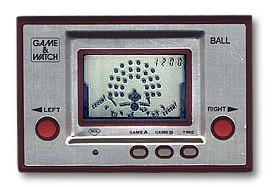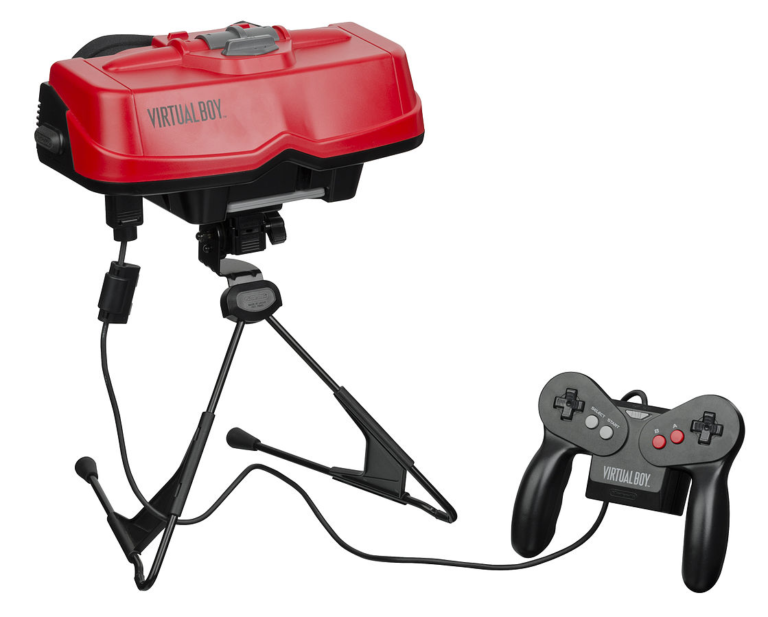Nintendo is a household name in the world of video games, and for a good reason. Since the release of its first major console in the US, the Nintendo Entertainment System (NES), Nintendo has consistently released high-quality gaming consoles that have captured the hearts and minds of millions of gamers worldwide.
Nintendo has released seven home videogame consoles, eight handhelds, and two majorly popular hybrid consoles till 2019. Here is a list of all the consoles developed by Nintendo:
| Year of Release | Console | Console Type |
| 1977 | Colour TV-Game | Home |
| 1980 | Game and Watch Series | Handheld |
| 1985 | Nintendo Entertainment System (NES) | Home |
| 1989 | Game Boy | Handheld |
| 1991 | Super Nintendo Entertainment System (SNES) | Home |
| 1995 | Virtual Boy | Hybrid |
| 1996 | Nintendo 64 | Home |
| 1998 | Game Boy Color | Handheld |
| 2001 | Game Cube | Home |
| 2001 | Pokémon Mini | Handheld |
| 2001 | Game Boy Advance | Handheld |
| 2004 | Nintendo DS | Handheld |
| 2006 | Wii | Home |
| 2011 | Nintendo 3DS | Handheld |
| 2012 | Wii U | Home |
| 2017 | Nintendo Switch | Hybrid |
| 2019 | Nintendo Switch Lite | Handheld |
1. All Nintendo Home Videogame Consoles
I. Color TV-Game (1977)

Most of you reading this may not have even heard of this video game console, as it was released back in 1977! It was a series of five dedicated home consoles released only in Japan.
The console contained a small number of Pong variation games like Tennis, Hockey, Volleyball, a racing game, etc., along with a built-in controller.
II. Nintendo Entertainment System (NES) (1985)
[https://i.imgur.com/D4ko6WX.png
Caption- NES
Source- Nintendo]
The NES was released in Japan in 1983, and then in North America in 1985. It was Nintendo’s first home video game console that was released outside Japan and was an instant success. It introduced classic franchises such as Super Mario Bros., The Legend of Zelda, and Metroid.
III. Super Nintendo Entertainment System (1991)

The SNES was the successor to the NES and introduced many classic games, including Super Mario World, The Legend of Zelda: A Link to the Past, and Super Metroid.
IV. Nintendo 64 (1996)

The N64 was Nintendo’s first console to feature 3D graphics and introduced classic games like Super Mario 340348, The Legend of Zelda: Ocarina of Time, and GoldenEye 007.
V. GameCube (2001)

It was Nintendo’s first console to use miniDVDs instead of full-size DVDs and introduced classic games like Super Smash Bros. Melee, The Legend of Zelda: The Wind Waker, and Mario Kart: Double Dash.
VI. Wii (2006)

The Wii was a revolutionary Nintendo console that introduced motion controls and appealed to a wider audience than just traditional gamers. It introduced classic games like Wii Sports, Super Mario Galaxy, and The Legend of Zelda: Twilight Princess.
VII. Wii U (2012)

The Wii U was the successor to the Wii and introduced a unique controller with a touchscreen. Classic games released on the Wii U include Super Mario 3D World, The Legend of Zelda: Breath of the Wild, and Mario Kart 8.
In addition to these consoles, Nintendo has also released several handheld consoles.
2. All Nintendo Handheld Consoles
I. Game & Watch series (1980)

The Nintendo Game & Watch series was a line of handheld electronic games that were produced by Nintendo from 1980 to 1991. These devices were unique in that they were the first portable video game systems that were small enough to fit in your pocket.
The most famous game in the series was undoubtedly “Donkey Kong,” which spawned a massively successful franchise.
II. Game Boy (1989)-

Who doesn’t know the legendary Game Boy? It revolutionized portable gaming and brought classic games such as Super Mario Land, Tetris, and The Legend of Zelda to players on the go. With its simple design and extensive library of games, the Game Boy remains an iconic and beloved console among gamers.
III. Game Boy Color (1998)

The Game Boy Color was an updated version of the original Game Boy, featuring a color screen and improved hardware. It included popular titles like Pokémon Gold and Silver, Super Mario Bros. Deluxe, and The Legend of Zelda: Link’s Awakening DX.
IV. Pokemon Mini (2001)

The Pokemon Mini was a tiny device, smaller than a Game Boy Advance cartridge, and featured a monochrome LCD screen.
Despite its small size, the Pokémon Mini had a surprising amount of power, with games featuring full-color graphics and sound. Although it was not as successful as other Nintendo consoles, the Pokémon Mini remains a unique and interesting piece of gaming history and is highly sought after by collectors.
V. Game Boy Advance (2001)-

Released in the same year as pokemon Mini, the Game Boy Advance was the successor to the original Game Boy and featured a color LCD screen and improved graphics capabilities.
The Game Boy Advance was backwards compatible with previous Game Boy games and had a large library of its own, including popular titles like Pokémon Ruby and Sapphire, Super Mario Advance, and The Legend of Zelda: The Minish Cap.
VI. Nintendo DS (2004)

The Nintendo DS featured two screens, with the bottom screen featuring touch-based controls. The DS was a massive success, selling over 150 million units worldwide and spawning several popular franchises, such as Nintendogs, Brain Age, and Animal Crossing.
VII. Nintendo 3DS (2011)

The Nintendo 3DS featured a glasses-free 3D display, which was a major selling point for the console. The 3DS also had improved graphics capabilities and a library of popular games, including Super Mario 3D Land, The Legend of Zelda: Ocarina of Time 3D, and Pokémon X and Y.
VIII. Nintendo Switch Lite (2019)

The Nintendo Switch Lite is a more affordable and portable version of the popular Nintendo Switch. The Switch Lite is designed exclusively for handheld play, with a smaller screen and non-removable Joy-Con controllers.
3. All Nintendo Hybrid Consoles
I. Virtual Boy (1995)-

The Nintendo Virtual Boy was a 3D gaming console that was released in 1995. It was unique in that it used a stereoscopic 3D display, which gave the impression of depth without the need for glasses.
However, the Virtual Boy was ultimately a commercial failure, with only 22 games released and poor sales. The console was criticized for its high price point, uncomfortable design, and lack of color. Despite its failure, the Virtual Boy remains an interesting and unique piece of gaming history and is highly sought after by collectors.
II. Nintendo Switch (2017)

The widely successful Nintendo Switch is Nintendo’s latest console and is a hybrid console that can be used as both a home console and a portable console. Classic games on the Nintendo Switch include The Legend of Zelda: Breath of the Wild, Super Mario Odyssey, and Animal Crossing: New Horizons.
4. What is Nintendo’s latest console?
The OLED model of the Nintendo Switch is the latest Nintendo console available in the market. This device features a vibrant 7-inch OLED screen, a wide adjustable stand, 64 GB of internal storage, and enhanced audio.
The OLED Nintendo Switch is available for purchase from Nintendo’s marketplace for a price of $349.99.
5. What will the next Nintendo console be?
A new Nintendo console launch can be expected towards the end of 2024, as predicted by the experts at Ampere Analysis, a data and analytics firm specializing in the videogames sector.
Considering the astonishing sales of the Switch, the experts believe that it still has some life left in it, and therefore, a new console won’t be the priority of officials at Nintendo.
Unfortunately, as of now, there are no official words on when we can see a new Nintendo console or what will it be.
6. About Nintendo
Nintendo is a Japanese video game and electronic company. They are well-known throughout the world for rolling out best-selling consoles and games.
Game Boy, Wii, and Nintendo Switch, etc., are some of the consoles that Nintendo is credited for. They are also applauded for making gems like Mario, Pokemon, The Legend of Zelda, etc.
From rich finances to high honors, Nintendo has it all!









No Comments on Nintendo Console Timeline: How many generations of consoles are there?